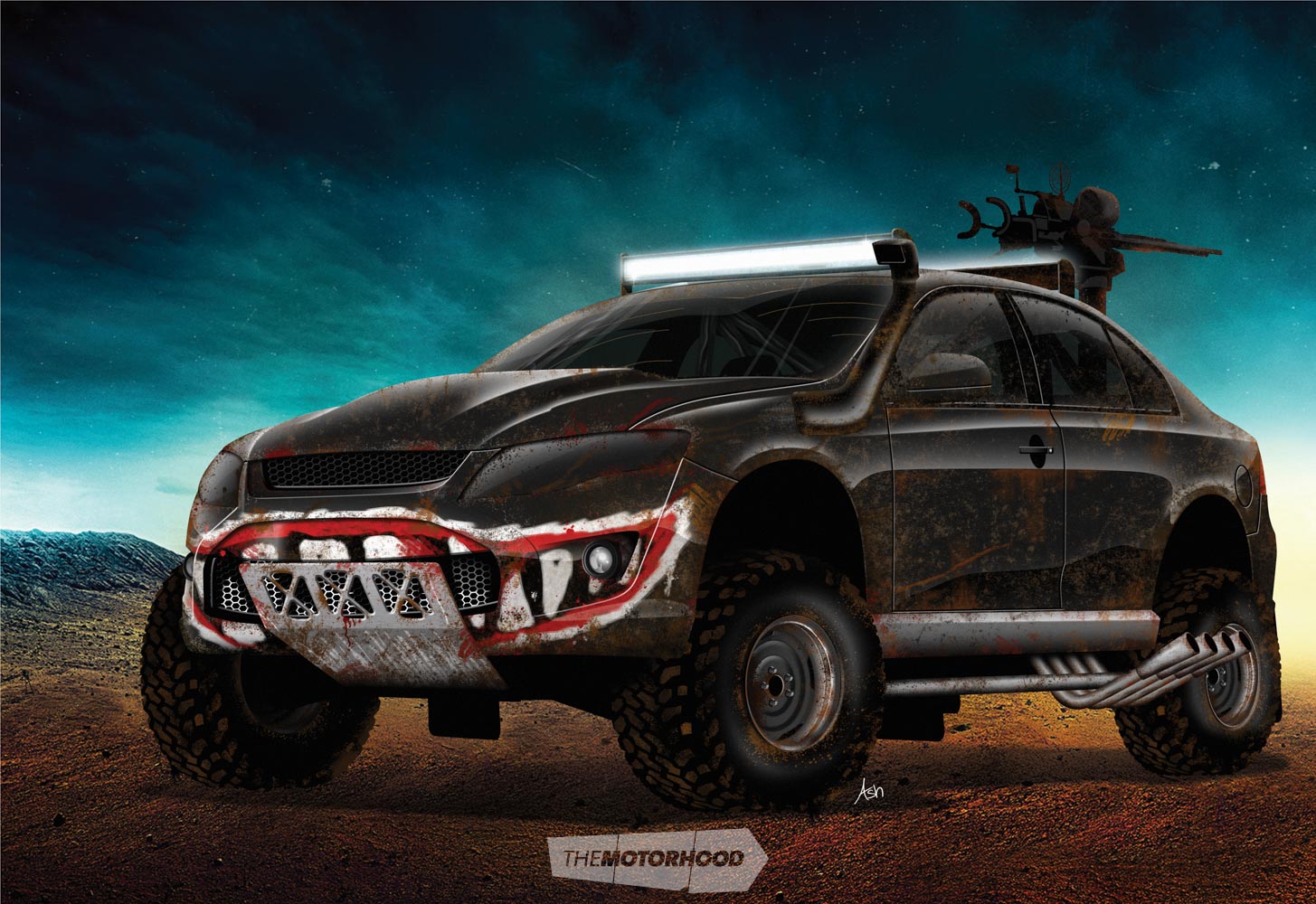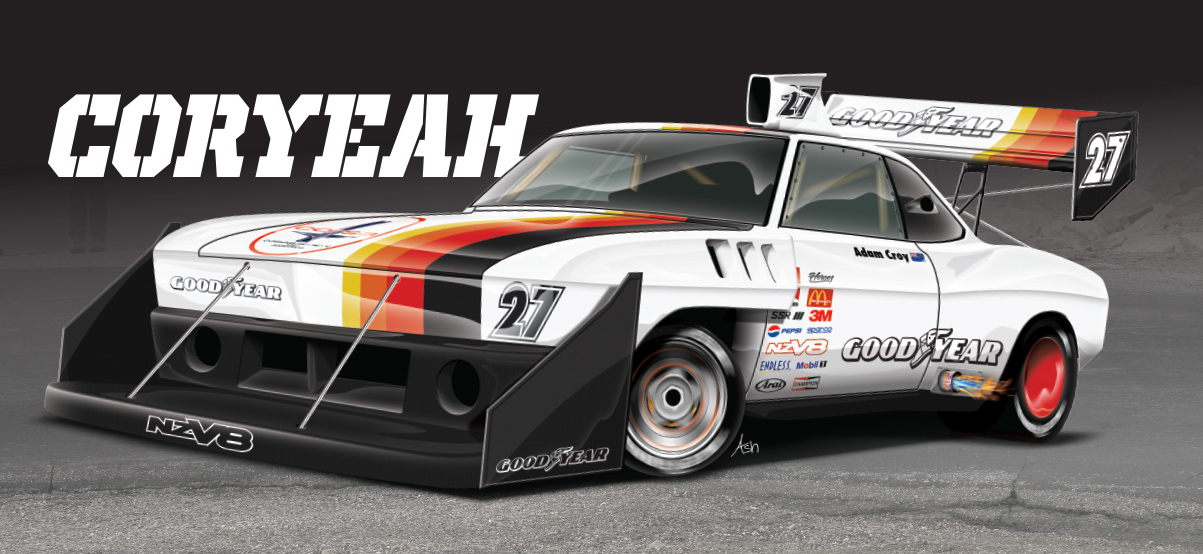This month’s cover-car owner, Roger Whyte, couldn’t think of a concept, so here’s something we cooked up — who knows, he might even give it a try!

Imagining a post-apocalyptic scenario knowing what we know in 2017, we could envisage a nuclear holocaust having ravaged society throughout the world. With the collapse of any form of economic system, the cornerstones of life as we know it would have been completely destroyed. An innovative man, this future Mad Max would no doubt have taken his existing FG FPV GT and modified it to suit his survival requirements.
Go-anywhere capability would be paramount, and this would be the first thing to be sorted. Using whatever tools he had at hand, he would adapt the Ford’s monocoque chassis to a trusty Hilux ladder frame with solid front and rear axles, re-engineered for a substantially increased ride height. Low-offset 15×8-inch steelies would be the go, with 35-inch mud tyres to complete the picture. Bolt-on fenders wouldn’t be required — what WOF guy would there be to say otherwise?
The supercharged 5.0-litre ‘Miami’ V8 would offer more than enough performance but would need a custom snorkel intake with roof-mounted panel-filter air-box to ensure that its fording ability wasn’t compromised. Function over form! Accordingly, the entire engine bay would be rewired and the electrics rehoused within a waterproof and dust-proof compartment, and the Toyota R151F five-speed manual adapted to the back of the V8. The entire undercarriage would be protected by an alloy bash plate, and the reasons for this will become clear.
The interior would be stripped of essentially everything except the seats, while the roof would gain front-facing and rear-facing LED light bars for uncompromised visibility. These would be joined by an array of solar panels that Maxwell’s ingenuity would have connected to a Toyota Prius–sourced Hybrid Synergy Drive electric motor adapted to the solid front axle, operated through a set of controls mounted where the dashboard centre console would have been.
The fuel tank would be adapted to a 200-litre barrel, mounted in a custom-fabricated cradle recessed in the place the rear seat once was, and the rear doors welded shut. The firewall and parcel tray would be cut out, with the body braced by tubular caging structured to allow thoroughfare into the rear of the car. Giving some go to the electric system, a lithium-ion battery pack would be stashed within the depths of the boot, in a custom mounting cell mounted hard up against where the rear firewall would have been. This would be necessary because the top of the boot would be cut out, making a ute-like space, with the rear of the boot lid welded shut and reinforced. A large-calibre machine gun sourced from we’d rather not know where, and mounted on a steel box-section frame, should take care of anyone needing to be taken care of!
The extreme left and right edges of the boot would be occupied by a 240V air compressor running through an inverter and a 200-litre fuel barrel. The fuel tank would be modified with plumbing fittings, with two outlets — one to create a tap for any pyrotechnic trails required and the other hooked up to a Holley low-pressure electric fuel pump, switchable from a 12V car battery, and feeding into a high-volume, low-pressure (HVLP) air spray gun for a rear-mounted flamethrower.
Last, but not least, two LPG bottles would be mounted beneath the rear of the car, contained in custom brackets held shut by a pin and R-clip. The R-clips would be attached to clutch-type cables and adapted to cabin-mounted levers, allowing the LPG bottles to be released remotely. These bottles would be modified with brackets holding grenades, and a metre-long bicycle brake cable would be attached to the pin and fixed to the body of the car. On release of the LPG bottle, the grenade would go live once the bottle had rolled a metre from the car, theoretically detonating or distracting any pursuing vehicle.
It’d be heavy and ugly as hell, but it could just be the survival machine on which a future Mad Max might rely. What do you reckon?

Your thoughts on last month’s concept:
Stephen Gray: “It’s as mad as cheese. I approve.”
Jared Murphy: “I’m into it. Love to see it climbing the hill at Pikes Peak.”
Lance James: “Yeah! Looks good!”




